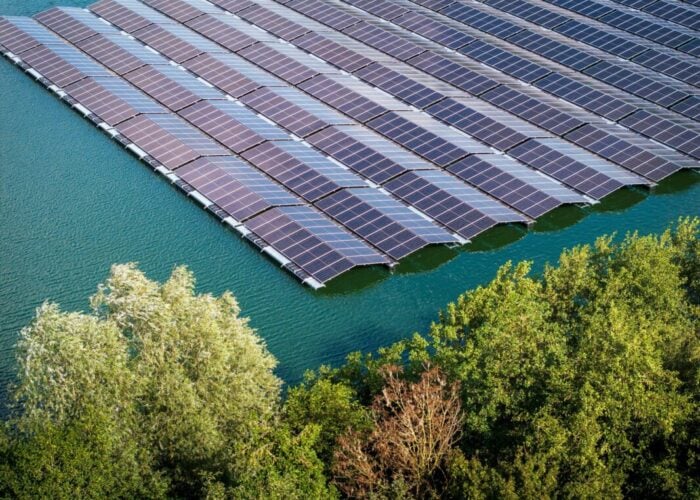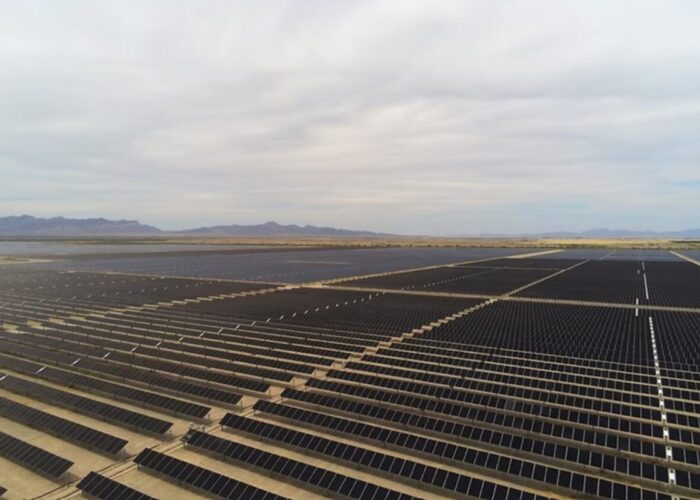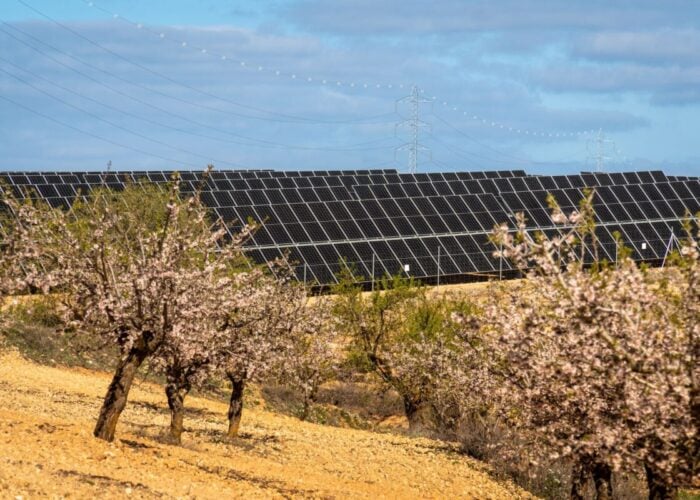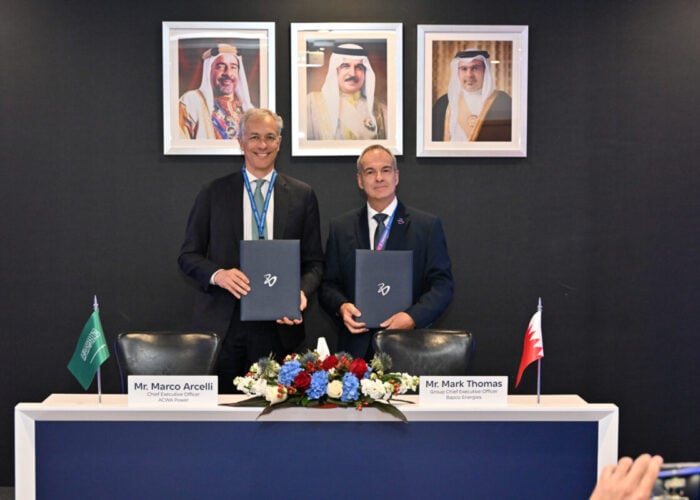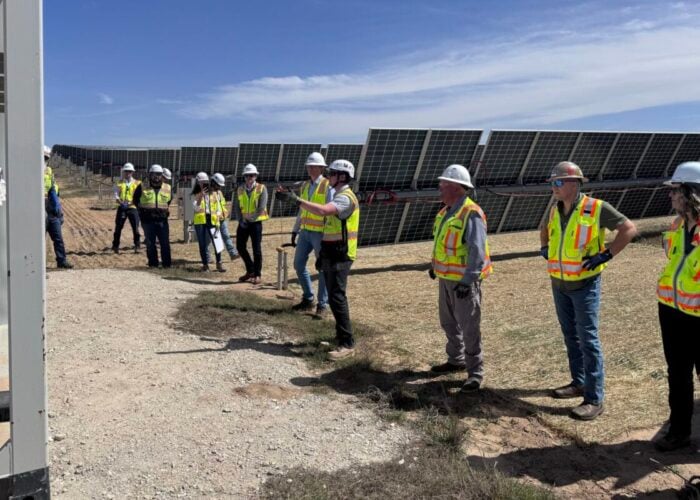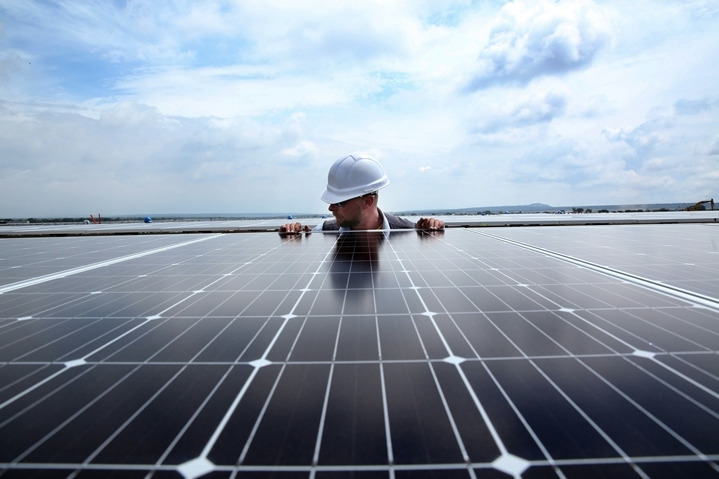
ACWA Power and Iberdrola are among the seven founders of a new coalition that aims to scale up the production of green hydrogen 50-fold in the next six years while halving production costs.
The Green Hydrogen Catapult – which also includes CWP Renewables, Envision, Ørsted, Snam and Yara – will target the deployment of 25GW of renewables-based hydrogen production by 2026, with a goal of driving down the cost of producing the fuel to below US$2/kg.
Try Premium for just $1
- Full premium access for the first month at only $1
- Converts to an annual rate after 30 days unless cancelled
- Cancel anytime during the trial period
Premium Benefits
- Expert industry analysis and interviews
- Digital access to PV Tech Power journal
- Exclusive event discounts
Or get the full Premium subscription right away
Or continue reading this article for free
It is estimated that the initiative will require an investment of around US$110 billion and create more than 120,000 jobs, as the founding partners look to accelerate the necessary technology, component manufacturing, market development and flow of investment.
The seven companies will work towards the 25GW target by developing project capacity, supporting the design tools to solve early market challenges and sponsoring collaboration to accelerate economic growth using green hydrogen. Rocky Mountain Institute, a non-profit that promotes clean energy, will facilitate the initiative.
“In certain geographies, we believe the collective ingenuity and entrepreneurship of the private sector can deliver green hydrogen at less than US$2 per kilogram within four years,” said Paddy Padmanathan, CEO of Saudi Arabian renewable energy developer ACWA Power.
“From an industry perspective, we see no technical barriers to achieving this, so it’s time to get on with the virtuous cycle of cost reduction through scale-up.”
The target of achieving US$2/kg or lower for green hydrogen production costs put forward by the initiative goes further than a recent analysis by IHS Markit, which said that amount could be reached by 2030. According to the research firm, costs below US$2/kg for electrolysis are where green hydrogen starts becoming competitive with traditional hydrogen.
Progress in renewables-based hydrogen has already been made by founders of the initiative. ACWA Power is a partner in a project that aims to construct a multi-gigawatt renewable hydrogen facility in the Middle East, while Iberdrola last month signed a deal to develop large-scale electrolyser projects and promote green hydrogen's supply chain in Spain.
Meanwhile, a recent study from Snam suggested that transporting green hydrogen produced using solar PV in North Africa could be up to 15% cheaper than producing it domestically in Italy.
The Green Hydrogen Catapult aims to align the production and use of green hydrogen with a trajectory that displaces fossil fuels at a rate consistent with achieving net zero global emissions by 2050 and limiting global temperature rise to 1.5 degrees Celsius.
Additional partners, including companies with hydrogen projects under development, investors and local governments, have been invited to participate in the initiative as it builds momentum ahead of the next UN Climate Summit, due to be held in Glasgow in November 2021.
RWE and Equinor join Dutch green hydrogen project
In a separate development this week, German utility RWE and Norwegian oil major Equinor have joined a project that aims to produce green hydrogen using offshore wind power in the Netherlands.
Launched in February 2020 by Shell, gas network operator Gasunie and the port of Groningen Seaports, the NortH2 project looks to build 4GW electrolysis capacity by 2030, before reaching more than 10GW by 2040.
The partners intend to jointly establish a system of offshore wind farms, electrolysers, gas storage and pipelines to convert offshore wind power into green hydrogen, store it and transport it to industrial clusters in north-western Europe. The project will complete a feasibility study by 2021, with the aim to start development activities in the second half of 2021.
Equinor touted the “great potential” for large-scale wind development in the North Sea as well as the existing natural gas infrastructure that is suitable for storage and large-scale transport of hydrogen. “Hydrogen will be key to decarbonisation and net zero efforts for the energy market, especially in otherwise hard to abate sectors which cannot be served by electricity,” said Equinor CEO, Anders Opedal.
The NortH2 project will also play a role in helping the European Union achieve its target of installing least 40GW of renewable hydrogen electrolysers across the bloc by 2030. To power this amount, the EU estimates it would need to scale up and connect between 80 – 120GW of solar and wind capacity.

